Wednesday 14 January, 2015, 12:52 - Spectrum Management
Posted by Administrator
Back in October of last year, Wireless Waffle reported that Marriott hotels had been fined by the FCC for deliberately interfereing with Wi-Fi networks in an attempt to try and force guests at their hotels to use the hotel's own extortionately priced WiFi service.Posted by Administrator
 Earlier this month, the New York Times reported that several hotel chains have petitioned the FCC for permission to legally undertake such activities. The lengthy petition argues on several points that hotel operators (and other landlords) should be able to manage their networks to the extent that they can identify, and neutralise, anyone trying to offer WiFi services other than themselves, thereby maintaining a quality of service and level of security and safety for their users.
Earlier this month, the New York Times reported that several hotel chains have petitioned the FCC for permission to legally undertake such activities. The lengthy petition argues on several points that hotel operators (and other landlords) should be able to manage their networks to the extent that they can identify, and neutralise, anyone trying to offer WiFi services other than themselves, thereby maintaining a quality of service and level of security and safety for their users.The main tenets of their argumentation seem to be:
- That the type of sophisticated monitoring and enforcement activities they are proposing do not constitute harmful interference but are good network management practices;
- That their networks are established using best industry practices to maximuse performance and that non-approved WiFi hotspots mess about with this and degrade their service;
- That the Part 15 rules that allow users to establish WiFi hotspots require those users to be located on a property where the user has "direct or indirect ownership or leasehold" and that this does not apply to hotel guests.
It then goes on to liken a university applying bandwidth caps to student usage as being a similar network management practice, but one that no-one would argue with and therefore, by implication, the practice of neutralising the threat of miscreant networks should also just be considered best practice.
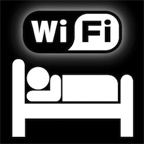 Notwithstanding any of the above, WiFi networks, whether operating under the Part 15 rules in the USA, or in most other countries are permitted access to the radio spectrum on a 'non interference' basis. This means that they are not permitted to interfere with any other users, and that they must accept any interference caused by any other users. In effect, they have no protection from interference at all. What the hotels are trying to do is run a commercial grade wireless internet service in this spectrum. If this were possible, and it were possible to provide the quality of service that users would seek, would it not follow that the big commercial operators would want to do the same thing too. Free WiFi hotspots in a coffee shop is one thing, but trying to provide a guaranteed service is another.
Notwithstanding any of the above, WiFi networks, whether operating under the Part 15 rules in the USA, or in most other countries are permitted access to the radio spectrum on a 'non interference' basis. This means that they are not permitted to interfere with any other users, and that they must accept any interference caused by any other users. In effect, they have no protection from interference at all. What the hotels are trying to do is run a commercial grade wireless internet service in this spectrum. If this were possible, and it were possible to provide the quality of service that users would seek, would it not follow that the big commercial operators would want to do the same thing too. Free WiFi hotspots in a coffee shop is one thing, but trying to provide a guaranteed service is another.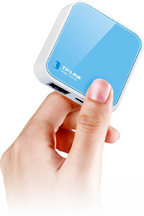 The hotel chains argue that when they enter into an agreement to provide services for, for example, a conference, they agree to some quality of service parameters for their WiFi service. This is their own silly fault! It's like guaranteeing your guests that it won't rain this week. It's not something that the hotel has control over. Not least, the WiFi bands are used by a myriad of other, non-WiFi devices, that could equally upset the performance of the hotel's WiFi networks including their very own microwave ovens!
The hotel chains argue that when they enter into an agreement to provide services for, for example, a conference, they agree to some quality of service parameters for their WiFi service. This is their own silly fault! It's like guaranteeing your guests that it won't rain this week. It's not something that the hotel has control over. Not least, the WiFi bands are used by a myriad of other, non-WiFi devices, that could equally upset the performance of the hotel's WiFi networks including their very own microwave ovens!One has to question whether these hotels would be so keen to conduct such complex network management if they offered their WiFi service for free. Hotel visitors should vote with their feet and choose hotels that do offer Free WiFi. Marriott and its friends would soon change their tune, not least as it appears that cheaper hotels have the best WiFi! Oh, and don't forget to take your Wireless Nano Router to set up your own network nice and easily too!
Post Script: It seems that just a day after writing this, the BBC report that Marriott has backed down. Was it something we said...?
add comment
( 295 views )
| permalink
| 



 ( 2.9 / 1257 )
( 2.9 / 1257 )




 ( 2.9 / 1257 )
( 2.9 / 1257 )
Various news web-site including CNN and the BBC report that American Airlines flight 136 due to fly from Los Angeles to London on October 26 was delayed by almost a day when a passenger sitting on the aircraft noticed a WiFi network named 'Al-Quida Free Terror Nettwork'. As a result, the aircraft was emptied and a search conducted by US Customs and Border protection officials but the source of the offending WiFi signal was never found. No doubt the misspelling of 'Al Qaeda' and 'Network' enhanced the level of terror indicating, as it does, that the person who set up the network was potentially:
As the BBC notes:
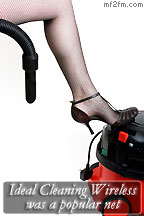 Back in 2007, Wireless Waffle undertook a survey of WiFi channel usage which found networks with such kooky names as 'Gary Barlow', 'Slapheads Network', 'Toast' and 'Fraudulent'. The practice of personalising WiFi network names (or SSIDs as they're technically known) is not a new one and whilst naming a network after a terrorist organisation is clearly a very bad idea (especially whilst at an airport) there's no law against it. If just setting an SSID to such a name can disrupt flights at a busy airport, then it opens the door to widespread misuse of, for example, the WiFi tethering options on mobile phones, to conduct all kind of Rabelaisian ruses.
Back in 2007, Wireless Waffle undertook a survey of WiFi channel usage which found networks with such kooky names as 'Gary Barlow', 'Slapheads Network', 'Toast' and 'Fraudulent'. The practice of personalising WiFi network names (or SSIDs as they're technically known) is not a new one and whilst naming a network after a terrorist organisation is clearly a very bad idea (especially whilst at an airport) there's no law against it. If just setting an SSID to such a name can disrupt flights at a busy airport, then it opens the door to widespread misuse of, for example, the WiFi tethering options on mobile phones, to conduct all kind of Rabelaisian ruses.
Many airports and other major venues and events (such as at the London Olympic Games) use radio spectrum monitoring equipment to check for people using unlicensed frequencies as the wireless landscape in such places is very complex with many networks sharing neighbouring frequencies. Careful planning is essential to ensure that the myriad of users do not interfere with each other (especially to the safety critical air-ground systems for example) and monitoring is vital in keeping the airwaves free of signals that could cause problems.
Maybe airports and other establishments that might be the target of people intent on causing havoc with their naughtily named WiFi SSIDs could take a leaf out of the book of Marriott and also install WiFi monitoring systems that would allow naughty network names to be traced and closed down before they caused multifarious mayhem.
- someone for whom English was not their first language;
- a dimwit whose IQ was far below average;
- someone with scant regard for spelling in an infidel's tongue; or
- a person deliberately trying to mask their true intentions by appearing as one of the above.
As the BBC notes:
Many broadband subscribers re-name their home wi-fi network to personalise it.
 Back in 2007, Wireless Waffle undertook a survey of WiFi channel usage which found networks with such kooky names as 'Gary Barlow', 'Slapheads Network', 'Toast' and 'Fraudulent'. The practice of personalising WiFi network names (or SSIDs as they're technically known) is not a new one and whilst naming a network after a terrorist organisation is clearly a very bad idea (especially whilst at an airport) there's no law against it. If just setting an SSID to such a name can disrupt flights at a busy airport, then it opens the door to widespread misuse of, for example, the WiFi tethering options on mobile phones, to conduct all kind of Rabelaisian ruses.
Back in 2007, Wireless Waffle undertook a survey of WiFi channel usage which found networks with such kooky names as 'Gary Barlow', 'Slapheads Network', 'Toast' and 'Fraudulent'. The practice of personalising WiFi network names (or SSIDs as they're technically known) is not a new one and whilst naming a network after a terrorist organisation is clearly a very bad idea (especially whilst at an airport) there's no law against it. If just setting an SSID to such a name can disrupt flights at a busy airport, then it opens the door to widespread misuse of, for example, the WiFi tethering options on mobile phones, to conduct all kind of Rabelaisian ruses.Many airports and other major venues and events (such as at the London Olympic Games) use radio spectrum monitoring equipment to check for people using unlicensed frequencies as the wireless landscape in such places is very complex with many networks sharing neighbouring frequencies. Careful planning is essential to ensure that the myriad of users do not interfere with each other (especially to the safety critical air-ground systems for example) and monitoring is vital in keeping the airwaves free of signals that could cause problems.
Maybe airports and other establishments that might be the target of people intent on causing havoc with their naughtily named WiFi SSIDs could take a leaf out of the book of Marriott and also install WiFi monitoring systems that would allow naughty network names to be traced and closed down before they caused multifarious mayhem.
Back in the early days of citizens band (CB) radio in the UK, when the 40 available channels were busy and bustling, some enterprising operators found that by changing the voltages on the pins of some of the integrated circuits inside their CB radios (the PLL), it was possible to make them operate on channels immediately below the normal 40. These channels were only used by those 'in the know' and were illegal to use (then again when did legality ever bother CB operators?) They became known as the 'moonlight' channels referring no-doubt to their somewhat illicit status and the fact that they tended to be busiest late at night.
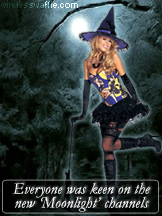 Move forward over 30 years and as of today (31 October 2014), radio amateurs in the UK have access to an additional piece of VHF spectrum from 146 to 147 MHz. Access to this extension to the 2 metre band is only through a notice of variation (NoV) which can be applied for by any full licensee on the RSGB web-site. The new spectrum will initially be available for just 12 months though Ofcom may automatically extend this if they see fit and is on a non-interference basis meaning that radio hams must not cause interference to any legitimate users (e.g. in neighbouring countries) and must accept any interference that those users cause.
Move forward over 30 years and as of today (31 October 2014), radio amateurs in the UK have access to an additional piece of VHF spectrum from 146 to 147 MHz. Access to this extension to the 2 metre band is only through a notice of variation (NoV) which can be applied for by any full licensee on the RSGB web-site. The new spectrum will initially be available for just 12 months though Ofcom may automatically extend this if they see fit and is on a non-interference basis meaning that radio hams must not cause interference to any legitimate users (e.g. in neighbouring countries) and must accept any interference that those users cause.
There are other limitations notably that the maximum transmitter power is 25 Watts, antenna height must not exceed 20 metres and in Scotland (and within 40 km of Scotland) the upper band edge is 146.9375 MHz.
Given the date of the release of this new piece spectrum to radio hams and its uncanny similarity to the original CB band extension (being immediately adjacent to the normal allocation) Wireless Waffle suggests that these new channels be also named the moonlight channels. To celebrate the release of the new VHF moonlight channels, we have compiled a list of one hundred horrible Halloween hits to dampen the spirits at any party.
Anyone for a natter on the newly designated moonlight calling channel of 146.666 MHz tonight?
 Move forward over 30 years and as of today (31 October 2014), radio amateurs in the UK have access to an additional piece of VHF spectrum from 146 to 147 MHz. Access to this extension to the 2 metre band is only through a notice of variation (NoV) which can be applied for by any full licensee on the RSGB web-site. The new spectrum will initially be available for just 12 months though Ofcom may automatically extend this if they see fit and is on a non-interference basis meaning that radio hams must not cause interference to any legitimate users (e.g. in neighbouring countries) and must accept any interference that those users cause.
Move forward over 30 years and as of today (31 October 2014), radio amateurs in the UK have access to an additional piece of VHF spectrum from 146 to 147 MHz. Access to this extension to the 2 metre band is only through a notice of variation (NoV) which can be applied for by any full licensee on the RSGB web-site. The new spectrum will initially be available for just 12 months though Ofcom may automatically extend this if they see fit and is on a non-interference basis meaning that radio hams must not cause interference to any legitimate users (e.g. in neighbouring countries) and must accept any interference that those users cause.There are other limitations notably that the maximum transmitter power is 25 Watts, antenna height must not exceed 20 metres and in Scotland (and within 40 km of Scotland) the upper band edge is 146.9375 MHz.
Given the date of the release of this new piece spectrum to radio hams and its uncanny similarity to the original CB band extension (being immediately adjacent to the normal allocation) Wireless Waffle suggests that these new channels be also named the moonlight channels. To celebrate the release of the new VHF moonlight channels, we have compiled a list of one hundred horrible Halloween hits to dampen the spirits at any party.
Anyone for a natter on the newly designated moonlight calling channel of 146.666 MHz tonight?
There can be no doubt that there is increasing pressure to find radio spectrum for a growing number of applications and uses. At the same time, there is a diminishing amount of spectrum that can be relatively easily re-purposed. It is against this backdrop that various organisations are seeking to find new ways to access the spectrum for new services without unduly upsetting the existing ones. One of these methods is the use of what has been termed 'white-space' spectrum.
So called white-space is comprised of the little 'off-cuts' that are left lying around after big holes have been punched into the radio spectrum by existing users.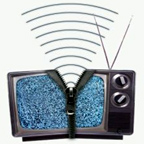 For example, high powered television transmitters punch great big holes into the spectrum, occupying big pieces of spectrum over very large areas. But the nature of such high powered broadcast services is that transmitters on the same frequency have to be separated by large physical distances so as to avoid neighbouring transmitters interfering with each other. At points roughly half-way between two such transmitters, neither transmitter will provide a signal that is strong enough to deliver a useful service, but the frequency can not be re-used for more broadcasting as doing so would cause interference to viewers in the coverage area of the two transmitters. But a different service (in particular one with much lower power) could be squeezed in without causing such interference. These small off-cuts can, in theory, be sewn together to form a patchwork quilt of spectrum that might just be useable.
For example, high powered television transmitters punch great big holes into the spectrum, occupying big pieces of spectrum over very large areas. But the nature of such high powered broadcast services is that transmitters on the same frequency have to be separated by large physical distances so as to avoid neighbouring transmitters interfering with each other. At points roughly half-way between two such transmitters, neither transmitter will provide a signal that is strong enough to deliver a useful service, but the frequency can not be re-used for more broadcasting as doing so would cause interference to viewers in the coverage area of the two transmitters. But a different service (in particular one with much lower power) could be squeezed in without causing such interference. These small off-cuts can, in theory, be sewn together to form a patchwork quilt of spectrum that might just be useable.
For many years, organisations including Google and Microsoft have poured large amounts of money into finding the right thread to stitch the pieces together to make a piece of spectrum big enough to be useful. Thousands of man-hours of research have been poured into radio spectrum white-space and millions of pounds of investment into technology and standards (including Huawei's recent purchase of white-space gurus Neul) have been made, but so far, other than a few technology trials, no 'killer app' for white-space has been found.
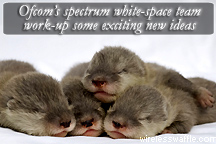 Kudos then, to Ofcom and Google, who have launched 'ZooCam' in which live pictures of animals at London Zoo are being transmitted from their cages directly to somewhere or other using white-space technology and then streamed onto the internet. When Wireless Waffle popped by to share in the excitement, the Otters were asleep, the Meercats were nowhere to be seen and the Galapagos Tortoise was moving so slowly that a daily photo update would have been just as informative as a live feed.
Kudos then, to Ofcom and Google, who have launched 'ZooCam' in which live pictures of animals at London Zoo are being transmitted from their cages directly to somewhere or other using white-space technology and then streamed onto the internet. When Wireless Waffle popped by to share in the excitement, the Otters were asleep, the Meercats were nowhere to be seen and the Galapagos Tortoise was moving so slowly that a daily photo update would have been just as informative as a live feed.
Philip Marnick, group director of Ofcom's Spectrum Policy Group is quoted as saying:
╣For 'data services' read 'pictures of furry animals on the internet' (which are known to account for over 85% of all internet traffic).
Might we be so bold as to suggest some other uses for this high-cost, leading-edge technology:
So called white-space is comprised of the little 'off-cuts' that are left lying around after big holes have been punched into the radio spectrum by existing users.
 For example, high powered television transmitters punch great big holes into the spectrum, occupying big pieces of spectrum over very large areas. But the nature of such high powered broadcast services is that transmitters on the same frequency have to be separated by large physical distances so as to avoid neighbouring transmitters interfering with each other. At points roughly half-way between two such transmitters, neither transmitter will provide a signal that is strong enough to deliver a useful service, but the frequency can not be re-used for more broadcasting as doing so would cause interference to viewers in the coverage area of the two transmitters. But a different service (in particular one with much lower power) could be squeezed in without causing such interference. These small off-cuts can, in theory, be sewn together to form a patchwork quilt of spectrum that might just be useable.
For example, high powered television transmitters punch great big holes into the spectrum, occupying big pieces of spectrum over very large areas. But the nature of such high powered broadcast services is that transmitters on the same frequency have to be separated by large physical distances so as to avoid neighbouring transmitters interfering with each other. At points roughly half-way between two such transmitters, neither transmitter will provide a signal that is strong enough to deliver a useful service, but the frequency can not be re-used for more broadcasting as doing so would cause interference to viewers in the coverage area of the two transmitters. But a different service (in particular one with much lower power) could be squeezed in without causing such interference. These small off-cuts can, in theory, be sewn together to form a patchwork quilt of spectrum that might just be useable.For many years, organisations including Google and Microsoft have poured large amounts of money into finding the right thread to stitch the pieces together to make a piece of spectrum big enough to be useful. Thousands of man-hours of research have been poured into radio spectrum white-space and millions of pounds of investment into technology and standards (including Huawei's recent purchase of white-space gurus Neul) have been made, but so far, other than a few technology trials, no 'killer app' for white-space has been found.
 Kudos then, to Ofcom and Google, who have launched 'ZooCam' in which live pictures of animals at London Zoo are being transmitted from their cages directly to somewhere or other using white-space technology and then streamed onto the internet. When Wireless Waffle popped by to share in the excitement, the Otters were asleep, the Meercats were nowhere to be seen and the Galapagos Tortoise was moving so slowly that a daily photo update would have been just as informative as a live feed.
Kudos then, to Ofcom and Google, who have launched 'ZooCam' in which live pictures of animals at London Zoo are being transmitted from their cages directly to somewhere or other using white-space technology and then streamed onto the internet. When Wireless Waffle popped by to share in the excitement, the Otters were asleep, the Meercats were nowhere to be seen and the Galapagos Tortoise was moving so slowly that a daily photo update would have been just as informative as a live feed. Philip Marnick, group director of Ofcom's Spectrum Policy Group is quoted as saying:
In a world where consumers' demand for data services╣ is experiencing huge growth, it is essential we find the most efficient ways to share the airwaves. White space technology could be one way of meeting this demand.
╣For 'data services' read 'pictures of furry animals on the internet' (which are known to account for over 85% of all internet traffic).
Might we be so bold as to suggest some other uses for this high-cost, leading-edge technology:

- 'BergCam' - participate in a thrilling, spill-a-minute live stream of global warming in action as the ice caps slowly melt.
- 'DecorCam' - in which a group of decorators position a camera somewhere different each day after painting a wall so can you watch it dry.
- 'HerbiCam' - a live-action feed from Lords Cricket ground focussing on a few blades of grass so that you can watch them grow.
- 'CymruCam' - share the excitement as someone in rural Wales tries to perform Windows updates using their dial-up internet connection.

